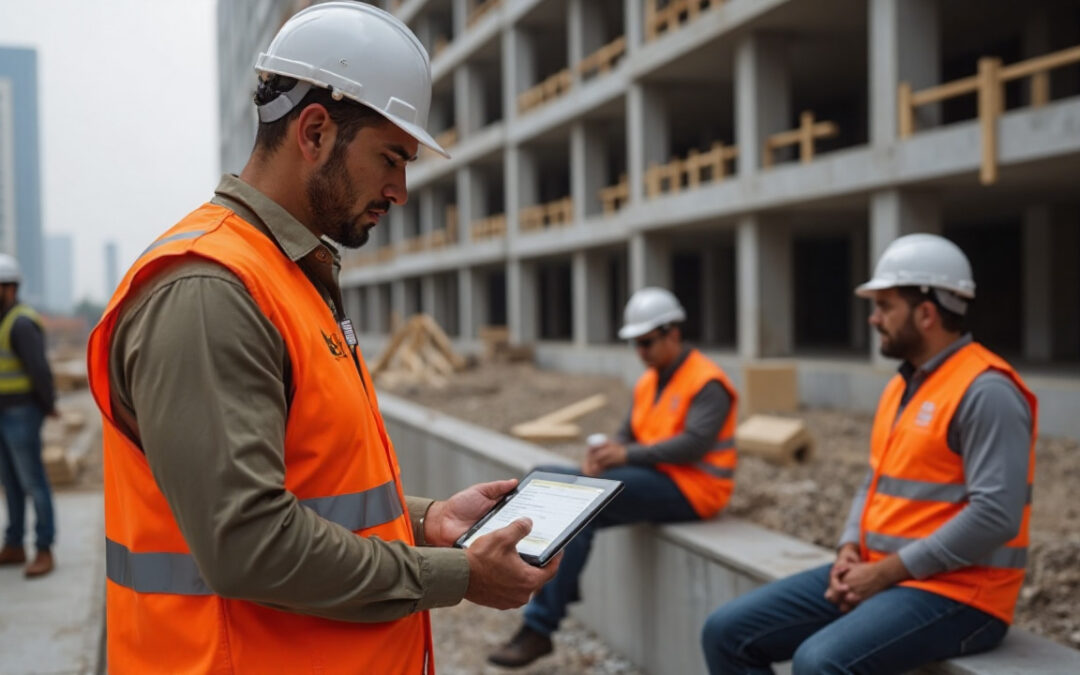#3 of 5 in our series, “The New ICE Age”
About This Series
The new administration has committed to higher tariffs and ever greater enforcement of legal employment laws. Because of its dependence on materials and immigrant labor, construction is particularly at risk. In this series, Safe Site Check In will summarize the risks and how construction project owners and contractors need to prepare themselves for “The New ICE AGE”. We’ll also suggest how Safe Site Check In can help mitigate enforcement risks from project owners down to workers.
Why Subcontractor Compliance Matters for General Contractors
A construction project employs workers from many companies. General contractors (GCs) carry much of the risk of ensuring a legal and ethical workforce. And that responsibility extends beyond their own direct employees. GCs must also take steps to verify the employment eligibility of individuals hired by their subcontractors. Failure to do so can expose GCs to legal risks, financial penalties, and project disruptions.
Understanding the Stakes
The legal landscape surrounding employment eligibility verification is complex, with both federal and state laws coming into play. Key regulations include the Immigration and Nationality Act (INA), the Immigration Reform and Control Act of 1986 (IRCA), and state-specific mandates like those recently enacted in Florida. A potential national mandate to use E-Verify, currently required only in Florida, could become national in scope.
For GCs, the stakes are high. Failing to ensure subcontractor compliance can lead to:
- Financial penalties for violating employment eligibility verification laws.
- Legal action and potential lawsuits.
- Reputational damage and loss of business opportunities.
- Project delays and disruptions due to workforce issues.

Strategies for Workforce Verification
GCs must take proactive steps to verify the legal employment of their subcontractors’ workforce. Here are six strategies to employ to ensure subcontractor compliance with workforce employment laws.
Contractual Obligations
- Incorporate explicit clauses in subcontracts requiring compliance with all federal and state employment eligibility verification laws.
- Include indemnification clauses to protect the GC from liability arising from the subcontractor’s non-compliance.
E-Verify for Federal Contracts
- If the GC’s project is a federal contract subject to the Federal Acquisition Regulation (FAR) E-Verify clause, ensure that subcontractors with subcontracts over $3,000 also enroll in and utilize E-Verify.
- Understand the flow-down requirements of the FAR E-Verify clause, which mandates that prime contractors ensure subcontractor compliance at all tiers.
Due Diligence
- Request documentation from subcontractors demonstrating their compliance with employment eligibility verification laws, such as copies of I-9 forms or E-Verify case verification results.
- Consider conducting on-site reviews of subcontractor records, but only with proper notice and in accordance with legal guidelines.
State-Specific Requirements
- Be aware of and comply with state-specific mandates, such as Florida’s expanded E-Verify law for private employers with 25 or more employees.
- Stay informed about the specific employment eligibility verification requirements in each state where you operate.
Communication and Collaboration
- Maintain open communication with subcontractors about employment eligibility verification requirements and expectations.
- Provide subcontractors with resources and training on compliance, especially smaller businesses that may have limited HR expertise.
Legal Counsel
Consult with an immigration attorney to ensure compliance with all applicable laws and regulations, especially when dealing with complex situations or potential red flags.
By taking these proactive steps, GCs can mitigate legal risks, protect their business interests, and contribute to a lawful and ethical construction industry
- USCIS E-Verify Website: https://www.e-verify.gov/
- Federal Acquisition Regulation (FAR): https://www.acquisition.gov/far/
- Florida Department of Economic Opportunity (DEO): https://floridajobs.org/
- USCIS Handbook for Employers: https://www.uscis.gov/i-9-central/form-i-9-resources/handbook-for-employers-m-274
Safe Site Check In Can Help
Protect yourself and your company by using our digital photo badges and worker profile data and get all your workers building again fast.

David Brian Ward is a CEO and Founder of Safe Site Check In LLC, a digital jobsite management platform launched in 2020 for the Construction industry. With over 40 years of experience in the technology industry, having launched and grown several successful companies. Mr. Ward is a now a SaaS entrepreneur and innovation leader in the Construction industry.

